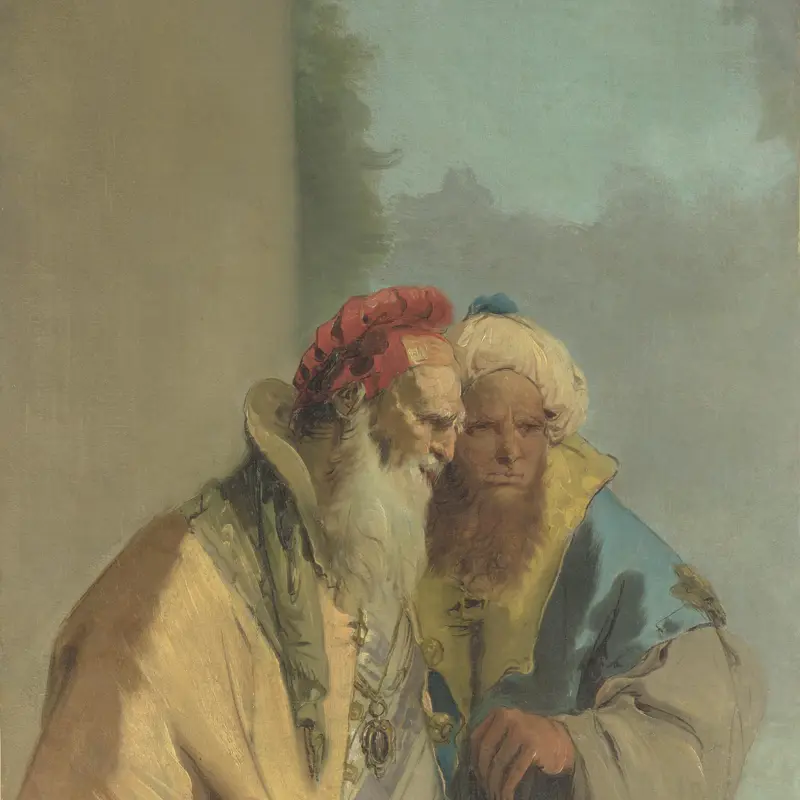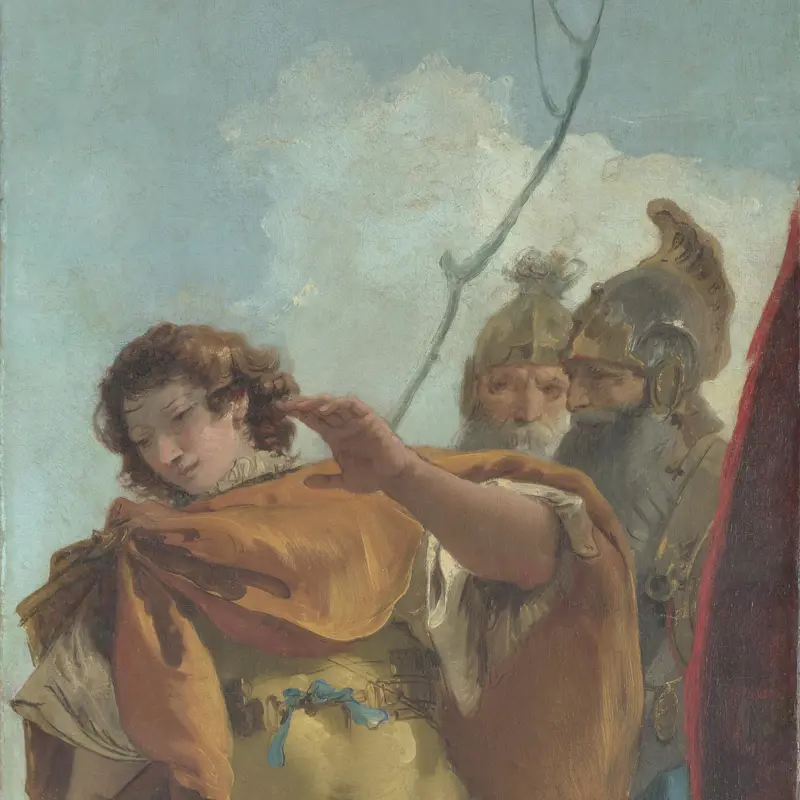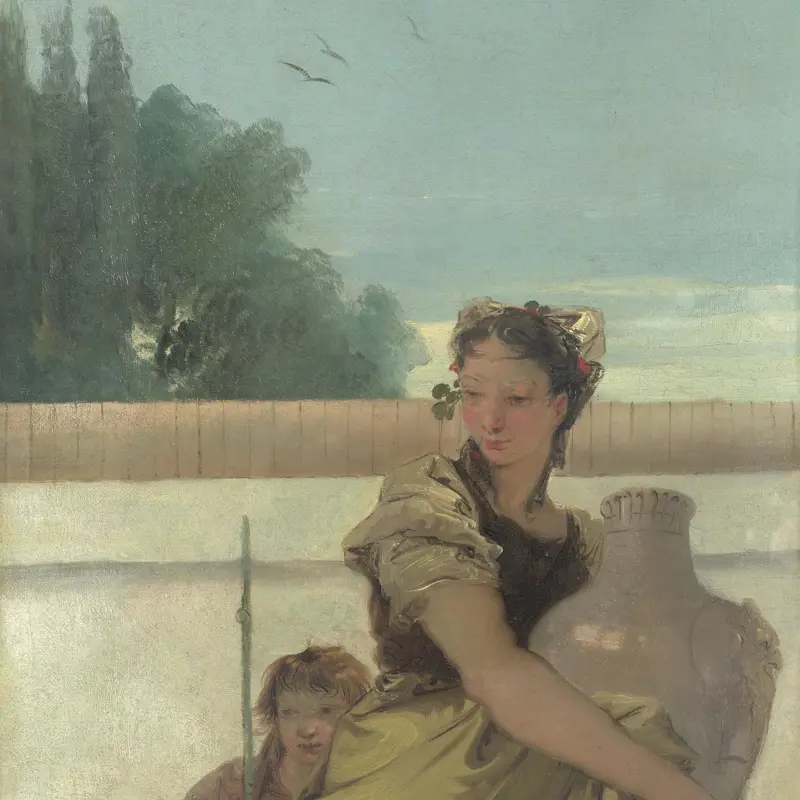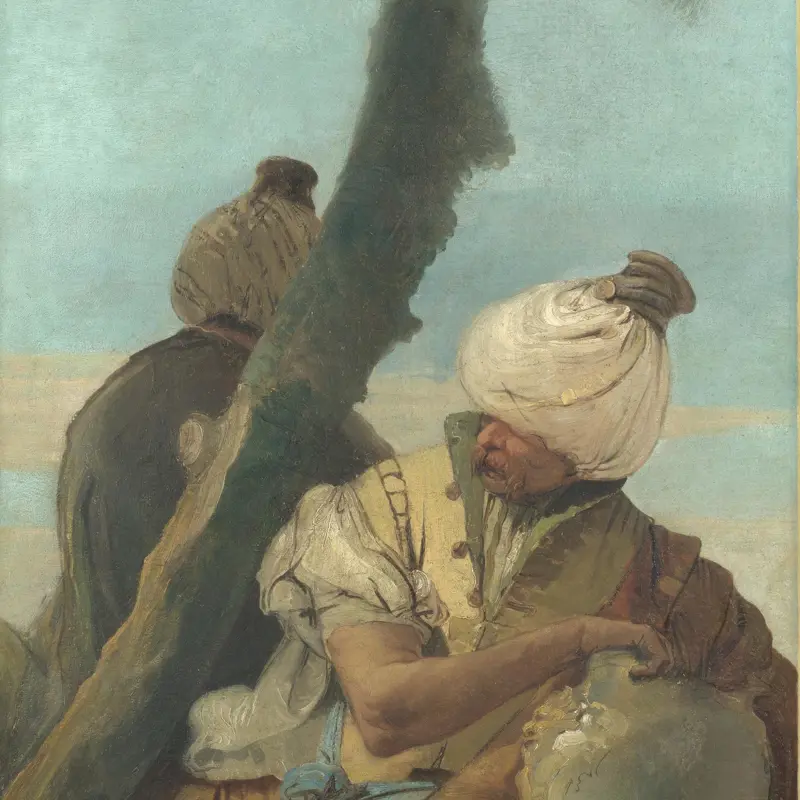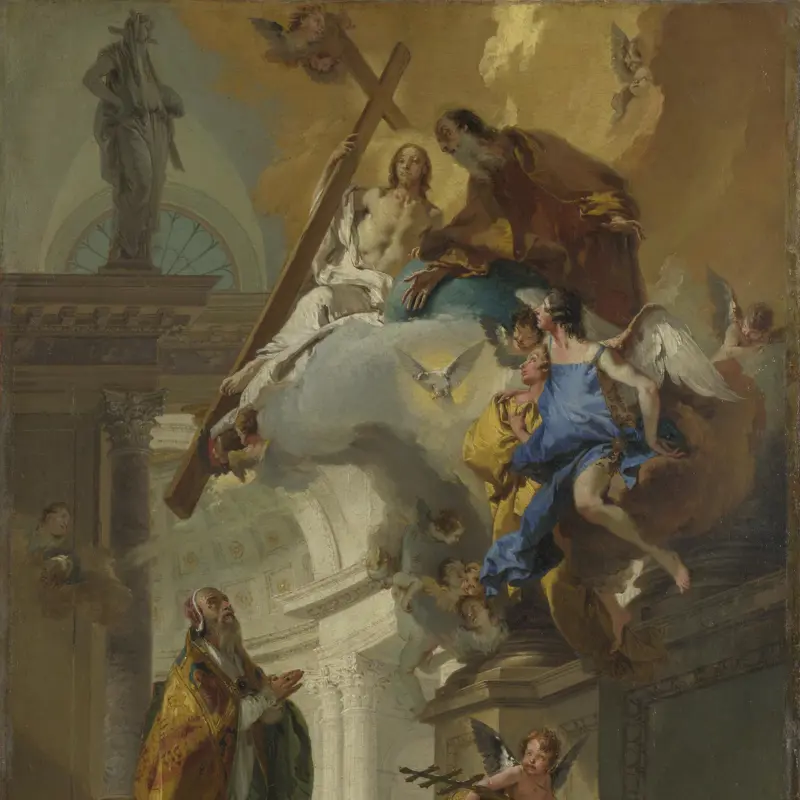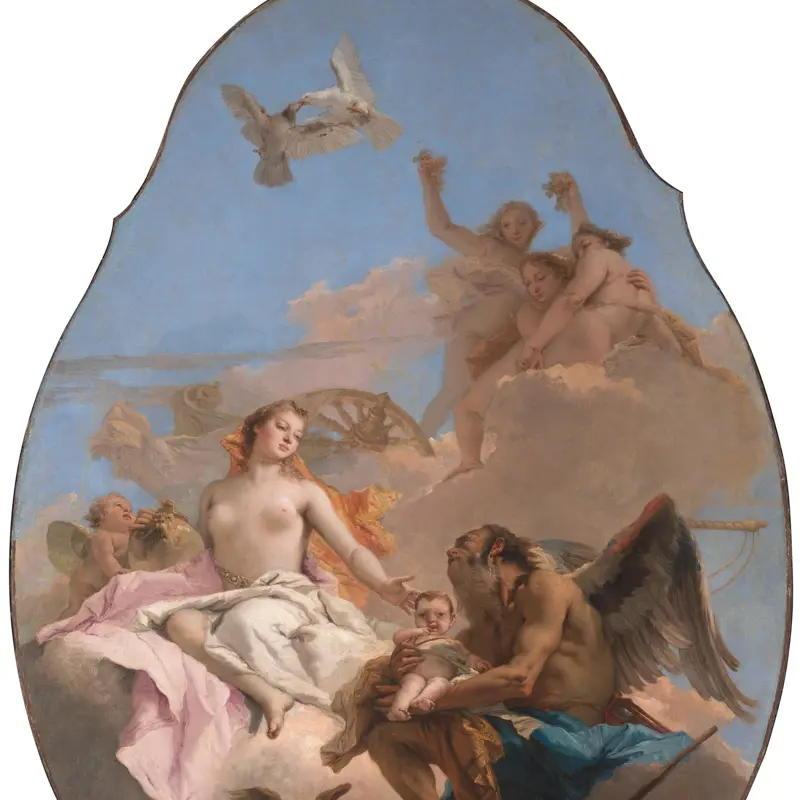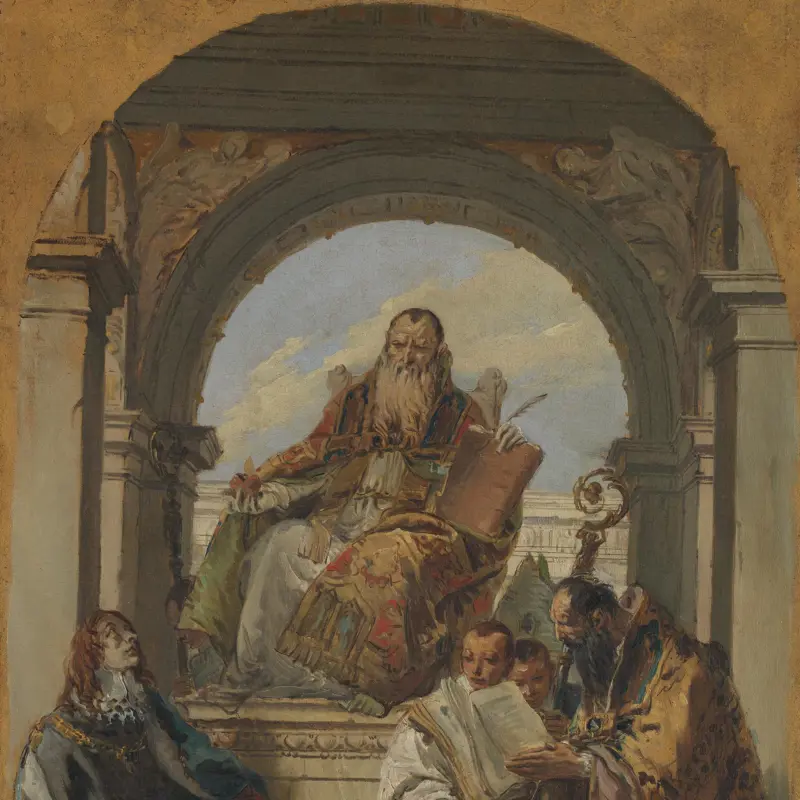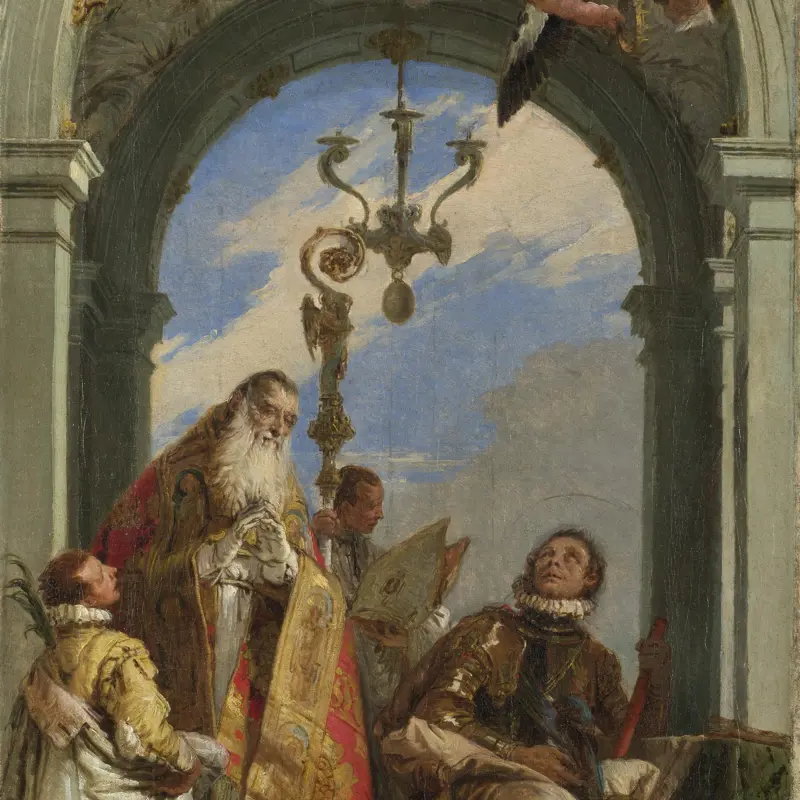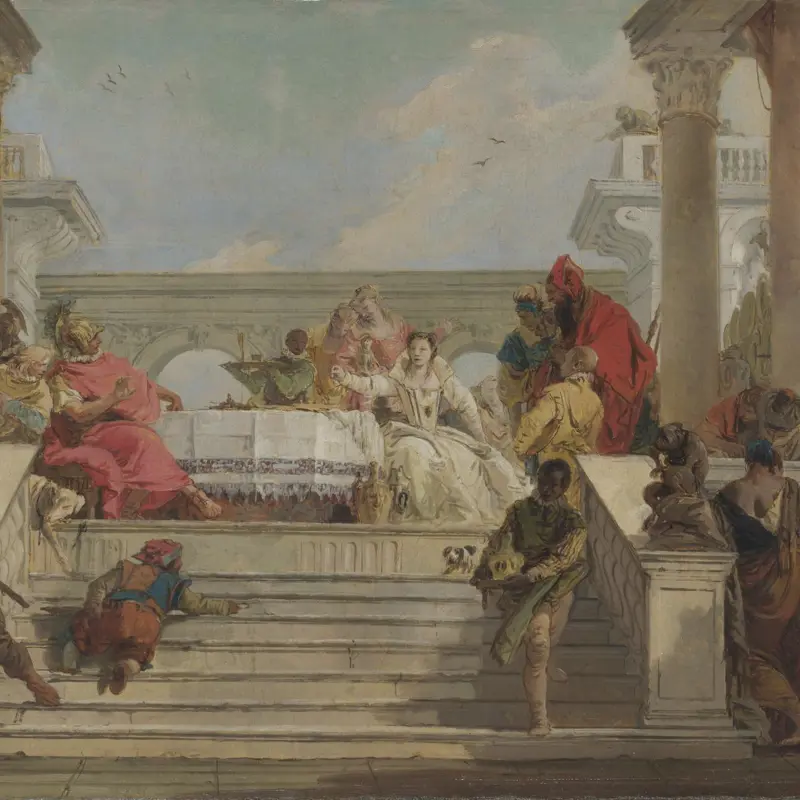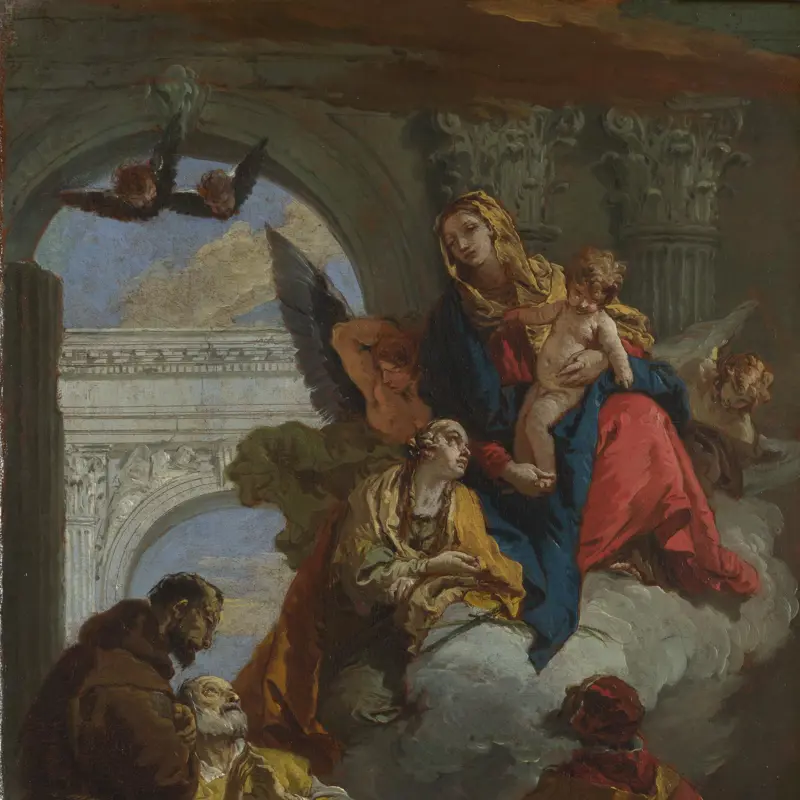Giovanni Battista Tiepolo, 'Two Men seated under a Tree', about 1740-6
About the work
Overview
Two men in turbans are seated under a tree that provides little shade. One has his back to us; the other, who wears his clothing in elaborate layers, has a bushy moustache that gives him extra character. He rests his right arm on a jar and looks across the scene, though his eyes are hidden by his headgear.
Depictions of people in Eastern Mediterranean dress were very popular during the seventeenth and eighteenth centuries, especially in prints. We know that Giovanni Battista Tiepolo studied and owned several similar prints by seventeenth-century artists such as Rembrandt and Benedetto Castiglione.
This is one of four decorative paintings commissioned from Tiepolo for a room in the Palazzo Cornaro on the Campo San Polo, Venice. The others – Seated Man, Woman with Jar, and Boy, Two Standing Figures and Rinaldo turning in Shame from the Magic Shield – are also in the National Gallery’s collection. All four scenes are inspired by the popular sixteenth-century epic poem Jerusalem Delivered by Torquato Tasso.
Key facts
Details
- Full title
- Two Men seated under a Tree
- Artist
- Giovanni Battista Tiepolo
- Artist dates
- 1696 - 1770
- Part of the series
- Four Decorative Scenes
- Date made
- about 1740-6
- Medium and support
- oil on canvas
- Dimensions
- 158.8 × 53 cm
- Acquisition credit
- Bought, 1960
- Inventory number
- NG6305
- Location
- Not on display
- Collection
- Main Collection
- Previous owners
Provenance
Additional information
This painting is included in a list of works with incomplete provenance from 1933–1945; for more information see Whereabouts of paintings 1933–1945.
Text extracted from the ‘Provenance’ section of the catalogue entry in Michael Levey, ‘National Gallery Catalogues: The Seventeenth and Eighteenth Century Italian Schools’, London 1986; for further information, see the full catalogue entry.
Bibliography
-
1962The National Gallery, The National Gallery: January 1960 - May 1962, London 1962
-
1986Levey, Michael, National Gallery Catalogues: The Seventeenth and Eighteenth Century Italian Schools, London 1986
-
2001
C. Baker and T. Henry, The National Gallery: Complete Illustrated Catalogue, London 2001
About this record
If you know more about this work or have spotted an error, please contact us. Please note that exhibition histories are listed from 2009 onwards. Bibliographies may not be complete; more comprehensive information is available in the National Gallery Library.
Images
About the series: Four Decorative Scenes
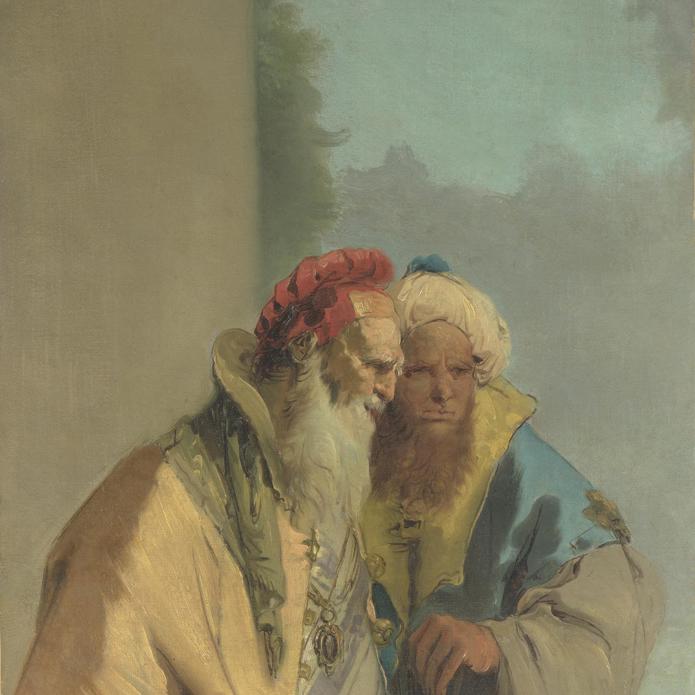
Overview
These four narrow canvases were painted during the 1740s by Giovanni Battista Tiepolo to decorate a room on the second floor of the Palazzo Cornaro on the Campo San Polo, Venice. Tiepolo was enjoying growing fame across Italy at this time; receiving important commissions for large ceiling paintings and wall decorations.
The paintings formed part of a complex decorative scheme, with which a ceiling painting (now in Canberra) and four allegorical figures (now divided between New York and Amsterdam), have been associated. Tiepolo’s four paintings in the National Gallery – Rinaldo turning in Shame from the Magic Shield, Seated Man, Woman with Jar and Boy, Two Standing Figures and Two Men seated under a Tree – are inspired by Torquato Tasso’s popular sixteenth-century poem Jerusalem Delivered. Set during the First Crusade, a Christian military campaign to recapture Jerusalem from Islamic rule, the poem tells of the ill-fated love between the Saracen sorceress Armida and Rinaldo, a Christian knight. Tiepolo’s pale pastel tones and lively brushwork in these scenes create a dazzling atmosphere that evokes the poem’s setting.

